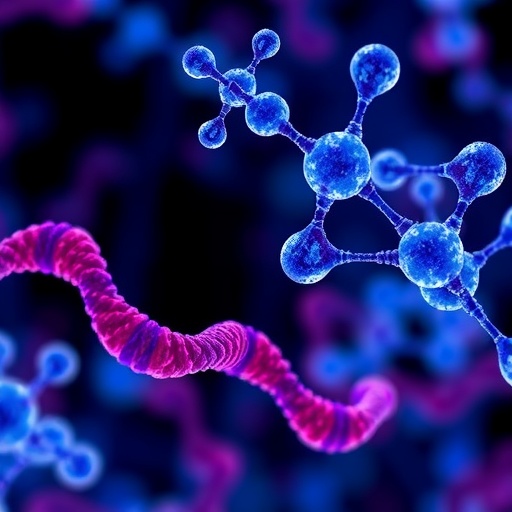In a groundbreaking study, researchers have identified isthmin-1 as a potential biomarker linked to the progression of renal function decline in patients suffering from type 2 diabetes mellitus. The findings, published in the journal BMC Endocrine Disorders, shed light on how high serum levels of isthmin-1 could serve as a crucial indicator for healthcare providers. As the prevalence of diabetes continues to rise globally, the urgency for effective monitoring and intervention strategies grows, making this discovery timely and significant.
As diabetes progresses, many patients experience declining renal function, a complication that complicates the management of their disease. With the kidneys playing a pivotal role in filtering and eliminating toxins from the body, any disruption in their functioning can lead to severe health consequences. Consequently, early detection of renal impairment becomes essential for improving patient outcomes. The role of biomarkers in predicting disease progression is invaluable, allowing for timely therapeutic measures that can alter the disease trajectory.
The study conducted by Wang et al. involved a comprehensive analysis of serum isthmin-1 levels among a cohort of patients with type 2 diabetes. The meticulously designed study considered numerous variables, including demographics, clinical history, and laboratory parameters, to establish a robust connection between isthmin-1 levels and renal function outcomes. Researchers utilized advanced statistical methods and biological assays, ensuring the accuracy and reliability of their findings.
Importantly, isthmin-1 is a protein that has been previously implicated in various physiological processes, including cell proliferation and differentiation. Its elevated serum levels in the cohort tested give credence to the possibility that isthmin-1 may play a role in kidney tissue repair and fibrosis. Understanding the specific mechanisms by which isthmin-1 influences renal function can open new avenues for targeted therapies aimed at mitigating the adverse effects of diabetes on the kidneys.
In the clinical realm, the implications of this research are profound. If validated in larger and more diverse populations, serum isthmin-1 could be employed as a routine screening tool for at-risk patients. Healthcare providers might leverage this biomarker not only to monitor existing renal decline but also to stratify risks and personalize treatment strategies. The potential to implement effective interventions earlier in the disease process could significantly reduce the burden of end-stage renal disease and related complications.
The researchers emphasized that while isthmin-1 shows promise as a biomarker, further studies are required to explore its utility in clinical practice. There is a need for longitudinal studies to confirm the causal relationships between isthmin-1 levels and the decline of renal function over time. Additionally, researchers must address the variability of isthmin-1 levels due to diverse biological factors such as age, sex, and comorbid conditions that might influence its serum concentration.
As communities and healthcare systems grapple with the escalating diabetes epidemic, the identification of novel biomarkers like isthmin-1 could profoundly impact public health strategies. The study’s findings may encourage healthcare providers to adopt a more proactive approach in managing diabetes and its complications, emphasizing the importance of biomarkers in preventive care.
The dynamics of diabetes mellitus type 2 necessitate a multifaceted approach to treatment and management. Regular monitoring of associated complications is crucial, especially regarding renal health. By recognizing high levels of isthmin-1 as a warning sign, medical professionals can embark on earlier intervention strategies, thereby enhancing long-term health outcomes. This proactive stance also speaks to broader public health initiatives aimed at reducing diabetes-related morbidity and mortality through better management strategies.
Moreover, as the research community continues to delve deeper into the mechanisms of diabetic complications, the study highlights the critical need for interdisciplinary approaches. Collaboration between endocrinologists, nephrologists, researchers, and public health experts is vital to integrate findings into practice effectively. It is through such synergies that comprehensive frameworks for prevention, timely diagnosis, and optimal management of diabetes and its complications can best be formed.
In conclusion, the discovery of high serum isthmin-1 levels as a potential biomarker for declining renal function in type 2 diabetes adds a vital piece to the intricate puzzle of chronic disease management. This finding not only emphasizes the importance of continuous research in diabetes complications but also underscores the potential for scientific advancements to translate into real-world applications that improve patient care. As the health community works toward better diagnostic tools and management strategies, isthmin-1 may usher in a new era of personalized medicine for those impacted by type 2 diabetes.
The journey ahead involves extensive research to validate the role of isthmin-1 further and explore its mechanisms of action. There is a pressing need for clinical trials to ascertain its efficacy and safety as a monitoring tool. The ultimate goal remains clear: to enhance the quality of life for patients with diabetes, ensuring proactive care that considers not only their blood glucose levels but also the broader spectrum of complications that may arise.
By keeping an eye on emerging biomarkers like isthmin-1, the medical community can move one step closer to more effective diabetes management. The advances made in this area exhibit the promise of turning the tide against diabetes-related complications, significantly influencing how care is delivered while ultimately aiming for better outcomes.
With these advancements on the horizon, it is crucial for healthcare professionals and researchers to stay informed and engaged with the ongoing developments in diabetes research to harness the potential that biomarkers like isthmin-1 hold for the future.
Subject of Research: High serum isthmin-1 levels as a biomarker for the progression of renal function decline in patients with type 2 diabetes mellitus.
Article Title: High serum isthmin-1 as a biomarker for the progression of renal function decline in patients with type 2 diabetes mellitus.
Article References: Wang, C., Cheng, Y., Xu, M. et al. High serum isthmin-1 as a biomarker for the progression of renal function decline in patients with type 2 diabetes mellitus. BMC Endocr Disord 25, 276 (2025). https://doi.org/10.1186/s12902-025-02093-x
Image Credits: AI Generated
DOI: https://doi.org/10.1186/s12902-025-02093-x
Keywords: isthmin-1, renal function decline, type 2 diabetes mellitus, biomarkers, public health.
Tags: BMC Endocrine Disorders studycomprehensive analysis of diabetes patientsdiabetes complications and managementearly detection of renal impairmentimplications for healthcare providers in diabetes careisthmin-1 as a biomarker for diabeteskidney function and toxin eliminationmonitoring renal health in diabetesrenal function decline in type 2 diabetesrise of diabetes prevalence globallyserum levels of isthmin-1therapeutic measures for diabetes progression





